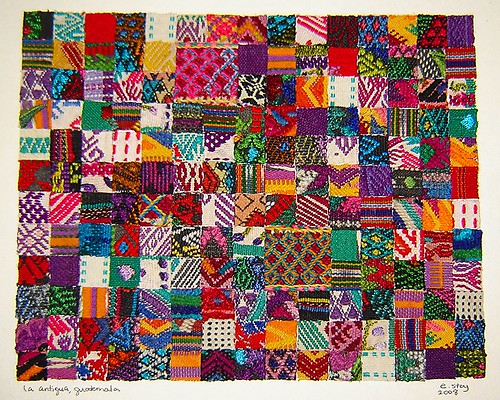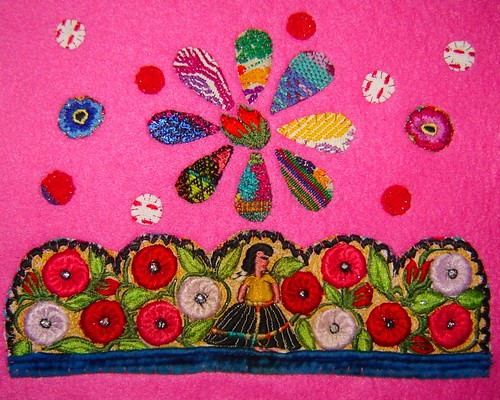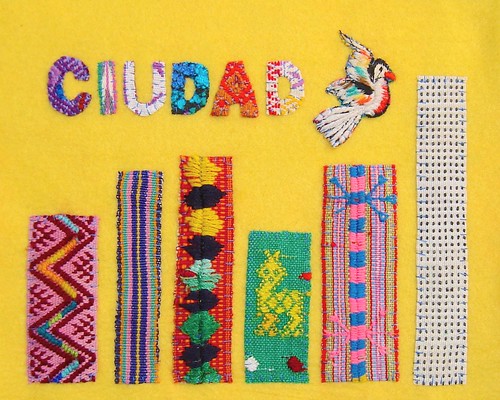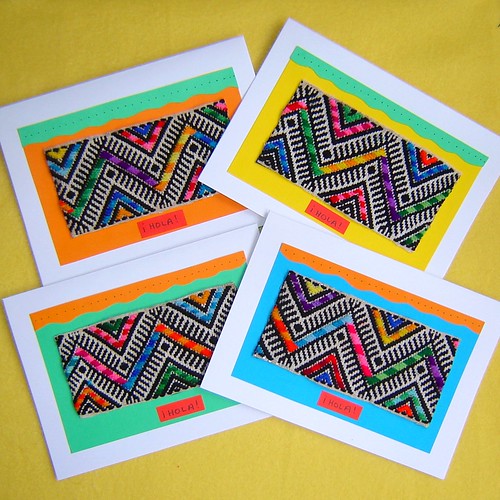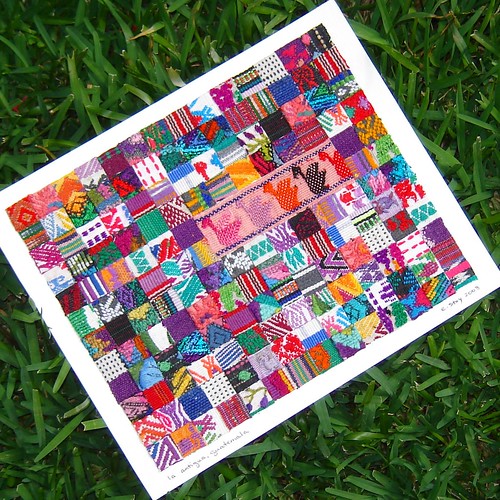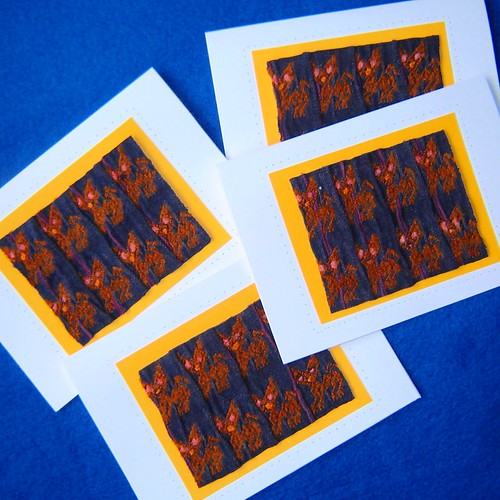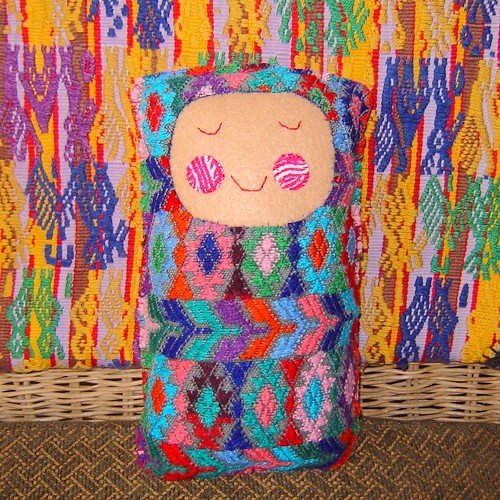I wrote my
second article for Rayela's Fiber Focus blog. This one is based on an interview I did with my friend, Yolanda, a young woman from Patzun. Article reproduced below!
****
Huipiles are the traditional, hand-woven blouses worn by women in Guatemala, and the designs vary by village. Those made in Patzun feature red or burgundy fabric with thin stripes. They are different from many other Guatemalan
huipiles because the adornments are embroidered onto the fabric instead of being woven into it. Yolanda Rodriguez Yos, a 22-year-old woman from Patzun, estimates that 90% of women in her hometown wear
traje (traditional Mayan dress). The remaining women work in the capital and wear
ropa americana much of the time.
Yolanda's mother taught her second eldest daughter to embroider when she was 12 years old. This is a common age for girls to learn, although daughters of wealthier families may not learn until they are 15 or 20 years old. These wealthier girls do not need to embroider to help the family earn money.
The women of Yolanda's family, however, embroidered
huipiles to sell at the Sunday market in Patzun. Yolanda believes that about 85% of women in Patzun know how to embroider. For families like hers, it is too expensive to purchase completed
huipiles, so they purchase fabric from local weavers and create and embroider the
huipiles themselves. The Rodriguez Yos family purchases its fabric from an aunt, who weaves but does not embroider.
As a young teenager, Yolanda would go to school until noon, come home and eat lunch, then work on embroidery from
1:00-6:00pm. After a break for dinner, she would embroider again from
7:00pm-midnight. Her mother would have one
huipil made by Yolanda; one by her older sister, Erika; and one by herself to take to the market
each Sunday. Each would sell for about 175Q, 110Q of which was materials (70Q for woven fabric and 45 for thread). That left a whopping 65Q (less than US$9) for 70 hours of work! And most of that money had to be re-invested in fabric and thread for the next
huipil.
Yolanda's sister, Erica, began embroidering at age eight and never liked it. Yolanda laughs that Erica's
huipiles would feature about four flowers, whereas the average one has about 20. Yolanda and her mother frequently had to finish Erika's
huipiles to get them ready to sell. Yolanda enjoyed using her imagination to design flowers and choose colors, which remain her favorite aspects of embroidery. (Sewing the
randa, or piece that joins the two pieces of woven fabric, is the part she likes the least.)
For Christmas, each girl would receive fabric and thread in order to make a
huipil for herself.
Yolanda is particularly efficient in her embroidery, in that it takes her one week to do what it takes many women two to four weeks to do. Instead of layering two colors on top of each other, making the embroidery very thick, she interconnects the different colors, making only one layer of thread. This saves not only time, but also money spent on thread. And she prefers the finished look to that of the thicker embroidery.
The basic steps for creating a
huipil from Patzun, if one is starting with cloth already made:
- Sew two panels of fabric together. This embroidery can be done in patterns of triangles, jugs, straight lines, or knots in the form of flowers.
- Choose the shape of the collar opening shape: round, square, diamond, or star.
- Divide the fabric into visual quadrants. With pen, draw flowers, leaves, and buds. (Some women, like Yolanda, prefer to draw and then embroider one quadrant at a time.) Be very careful when drawing the circle around the collar to make sure you're not going lopsided. The design should be the same in all four quadrants, but the colors can be different on the front and back. This is the step in which the embroiderer can use the most creativity and imagination, selecting a combinations of colors and designing the flowers. Keep in mind the question of purpose: Is the huipil for a wedding or fiesta or for everyday use? This will help determine the formality of the design.
- Design sleeve adornments, if they will be used. Some people prefer large flowers here, some small, some none at all. Yolanda's mother is of the belief that there should be very little adornment on the sleeves, if any. Large flowers are too extravagant, the equivalent of wearing too much jewelry or makeup.
- Complete embroidery.
- Sew sides of huipil.
Yolanda has made about 200
huipiles in her life (10 are ones she wears even today) but hasn't done much embroidery in the last three years. Between her studies at a local university, her English classes, and her job as a housekeeper, she hasn't had any extra time for sewing. However, she would like to do more in the future, and plans to teach her future daughters because it's a valuable skill for Guatemalan women to have.


